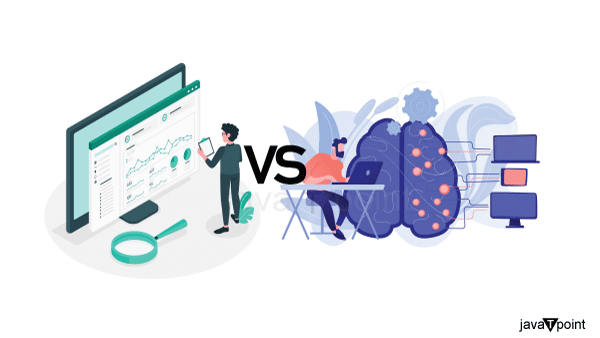Data Analytics vs. Machine Learning
In the current data-driven era, businesses and institutions are eager to uncover valuable insights from extensive datasets. Data analytics and machine learning stand as prominent methods utilized to extract meaning from this wealth of information. Although they share commonalities, these approaches also possess essential differences. This article aims to delve into the subtleties of data analytics and machine learning, illuminating the advantages, drawbacks, and obstacles associated with each. Furthermore, we explore the synergistic connection between these fields and envision the exciting prospects that lie ahead for them. Data AnalyticsThe field of data analytics entails the exploration of raw data to reveal underlying patterns, connections, and developments. It encompasses a wide range of techniques, including descriptive, diagnostic, predictive, and prescriptive analytics. Data analytics provides numerous advantages, such as making well-informed decisions, spotting potential business opportunities, streamlining processes, and gaining a competitive advantage. However, it is essential to acknowledge that data analytics also comes with certain limitations, including the requirement for structured data, potential biases, and constraints when dealing with intricate pattern recognition. Machine LearningMachine learning is a specific domain within the broader realm of artificial intelligence, centering on algorithms and models designed to learn from data and render precise predictions or decisions. This area encompasses diverse techniques, ranging from supervised learning to unsupervised learning and reinforcement learning. The benefits of machine learning are rooted in its adeptness at dealing with intricate and unstructured data, automating tasks, and adjusting to dynamic environments. Nevertheless, certain challenges persist, such as the necessity of acquiring trustworthy and labeled data, ensuring the interpretability of models, and addressing potential biases within the algorithms. Differentiating Data Analytics and Machine LearningData analytics, and Machine learning, serve different purposes and adopt distinct approaches. Data analytics centers on exploring historical data, extracting valuable insights, and optimizing processes. It tends to be more descriptive and diagnostic, focusing on understanding what happened and why. On the other hand, machine learning focuses on training models using data to make predictions or informed decisions. Particularly, predictive and prescriptive analytics aim to provide accurate forecasts and recommendations based on patterns discovered in the data. Difference table for Data Analytics and Machine Learning
The synergy between Data Analytics and Machine LearningData analytics and machine learning are two interrelated fields that complement each other's strengths. Data analytics lays the groundwork for machine learning by preprocessing and analyzing data, recognizing essential attributes, and deriving meaningful insights. In return, machine learning elevates data analytics by automating intricate processes, revealing latent patterns, and facilitating prompt decision-making. The fusion of these methodologies unleashes potent potentials for businesses, resulting in precise predictions, data-driven strategies, and heightened operational efficacy. Challenges in Data Analytics and Machine LearningAlthough data analytics and machine learning offer a plethora of advantages, they also present certain challenges. In the realm of data analytics, a prominent hurdle is acquiring high-quality and readily available data. Ensuring data cleanliness, reliability, and relevance can be a time-consuming and resource-intensive endeavor. Furthermore, data privacy and security concerns must be diligently addressed to comply with regulations and safeguard sensitive information. On the other hand, machine learning confronts challenges in selecting the most suitable algorithms and models for specific problems. The efficacy of machine learning models significantly hinges on the caliber and representativeness of the training data. Biases and imbalanced datasets can yield inaccurate predictions and inadvertently perpetuate existing biases. Additionally, model interpretability and explainability are pivotal to instilling trust and fathoming the factors shaping the decisions made by machine learning models. Overcoming these obstacles will be pivotal in unleashing the full potential of data analytics and machine learning to revolutionize various domains and enhance our understanding of complex phenomena. Future Directions and OpportunitiesThe outlook for the future of data analytics and machine learning holds tremendous promise. Continuous progress in technologies like big data, cloud computing, and deep learning is significantly influencing the field. In the forthcoming years, we foresee the emergence of more advanced algorithms, a heightened focus on ethical considerations, improved model interpretability, and increased automation. Additionally, the accessibility of data analytics and machine learning through user-friendly tools and platforms will empower both individuals and organizations to tap into their advantages without the need for extensive technical know-how. These strides are bound to bring about transformative changes in various industries and propel innovation to new horizons. ConclusionData analytics and machine learning are instrumental methodologies that empower organizations to gain valuable insights and make well-informed decisions. Data analytics delves into historical data to understand trends and optimize operations, while machine learning leverages patterns in the data to make predictions and initiate actions. Recognizing the nuances and synergies between these disciplines is essential for organizations to harness their complete capabilities. By harmonizing the strengths of data analytics and machine learning, businesses can unlock fresh prospects, gain a competitive advantage, and pave the way for a future driven by data. |
 For Videos Join Our Youtube Channel: Join Now
For Videos Join Our Youtube Channel: Join Now
Feedback
- Send your Feedback to [email protected]
Help Others, Please Share









